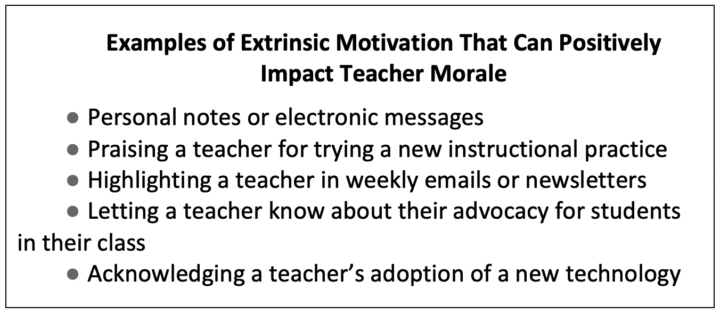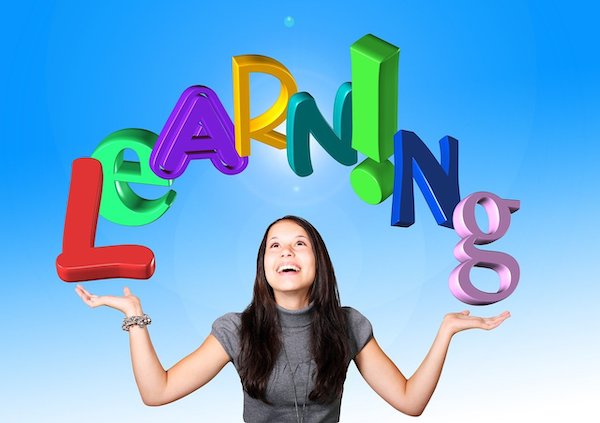Motivating Teachers for Success during Challenging Times
By Ronald Williamson and Barbara R. Blackburn
Ronald Williamson
Turnover among teachers and staff has accelerated over the past two years. Almost every state has seen an increase in retirements and, for younger staff, leaving teaching for other fields (Fox, 2021).
Much of the attrition is attributed to “pandemic fatigue” associated with the whipsaw between virtual and face-to-face instruction, or both at the same time. All of this is exacerbated by a prolonged teacher shortage – resulting in the teachers who remain being expected to do more and more.
Barbara Blackburn
Recent survey data from the California State Retirement System (CalSTRS, 2021) show that among 500 respondents who retired in 2020, 62% left earlier than planned. Of those, 56% cited the challenges of teaching during the pandemic, 35% were reluctant to continue working remotely and 35% worried about the risk of exposure to Covid-19.
Pandemic fatigue also affects those who continue to teach. It impacts morale and commitment and can sap motivation for remaining in the profession. School leaders face the challenge of continuing to support their veteran staff and assuring that newly hired teachers choose to continue in the profession.
What can a principal do to address pandemic fatigue while also addressing the issue of motivation? There is a difference between a motivated and an unmotivated teacher. Teachers with high motivation are engaged, focused, connected to leaders and other teachers, and always striving to do more. On the other hand, teachers with low motivation often show a lack of interest, are disengaged, and tend to do the minimum.
Does that sound familiar? Of course, the real issue is not identifying a teacher’s motivation – it’s understanding and dealing with it.
Types of Motivation

Recently those factors have also included their school and community’s response to the pandemic, increasing political demands on schools, and the adoption of remote learning.
Intrinsic motivation comes from within the teacher. With extrinsic rewards we can get temporary results, but for long-term impact we need to help teachers activate their intrinsic motivation.
Extrinsic Motivation
Extrinsic motivation comes from outside a teacher; anything that is external. In our educational system we automatically use extrinsic rewards, such as teacher evaluations and measuring teachers based on students’ test scores. Although these can be positive for some teachers, they also carry negative connotations.
Specifically, most teachers believe they cannot control students’ test scores, so the accountability that accompanies those scores can have a negative impact on morale. As stated earlier, teacher motivation is also shaped by environmental considerations.
Positive Aspects of Extrinsic Motivation
Some authors, such as Alfie Kohn, believe there are no appropriate uses for external motivation. We believe there are limited uses for it. For example, we agree with Daniel Pink, the author of Drive, who compares extrinsic motivation to caffeine, noting it gets you going (although you are less motivated later).
Pink also points out that extrinsic rewards do work for a short time for mechanical, rote tasks. That’s why actions such as writing a personal note to a teacher make a difference. Positive extrinsic motivation can also balance the negativity that sometimes comes with external accountability.
Intrinsic Motivation
Intrinsic motivation comes from within the teacher. It is internal as opposed to external. With intrinsic motivation teachers appreciate teaching and learning for its own sake. They enjoy learning to improve their craft and the feelings of accomplishment that accompany teaching.
That said, in recent times, the additional stresses of teaching and learning have made it more difficult for teachers to be intrinsically motivated, despite the benefits.
Intrinsically motivated teachers tend to prefer challenging work, are more confident about their abilities, and believe they can truly make a difference in terms of student learning. Even so, the unprecedented educational situations related to COVID have undermined many teachers’ confidence, lowering intrinsic motivation. This only reinforces our need to focus on it.
The Foundational Elements of Intrinsic Motivation
Intrinsic motivation has two foundational elements: People are more motivated when they value what they are doing and when they believe they have a chance for success. Teachers see value in a variety of ways, but the main three are relevance, activities, and relationships.
Seeing the Value
Teachers typically see value through the relevance of what you are asking them to do. That’s why we strive to show practical applications. When you implement a new initiative or ask teachers to try a new strategy in their classroom, they want to see the function. In fact, most teachers have a streaming music station playing in their heads, WII-FM—what’s in it for me? That’s why they ask you, “Why do we need to do this?”
When Barbara does workshops with teachers, she knows they come into her session with one burning question: “How can I immediately use this information?” Adult learners juggle so many demands; they prioritize activities and their attention based on how well something meets their immediate needs.
So often we forget to show teachers why they need to know what we are doing. Teachers are more engaged in learning when they see a useful connection to themselves. During challenging times we must constantly revisit the usefulness of what we are doing.
Next, there is value in the type of PD learning activities you are doing. Teachers are generally more motivated by doing something than by simple “sit and get” experiences. They are also more motivated when they have ownership in the activity. Whether teachers are on campus or working remotely, rather than simply planning a new initiative, involve teachers in the decision-making process.
Finally, teachers find value in their relationships, with you and with their peers. The old adage “They don’t care what you know until they know how much you care” is true. Teachers need to feel liked, cared for, and respected by their leaders.
Most teachers also need the same from their peers. If they feel isolated from other teachers and from you, they are disengaged and less likely to see value in what they are doing. As we mentioned earlier, when teachers are stressed, it can impact motivation, especially relationships.
Success
Teachers are also motivated when they believe they have a chance to be successful. And that belief is built on three building blocks: level of challenge, experiences, and encouragement.
First, the degree of alignment between the difficulty of an activity and a teacher’s skill level is a major factor in self-motivation. For many teachers, trying to balance hybrid learning or meet the social and emotional needs of their students has been a struggle. This is where professional development is crucial. As you are motivating teachers to implement a new initiative or improve their teaching, remember to also provide the appropriate support to improve their skill level.
A teacher’s experiences are also an important factor. One is more likely to believe they can be successful implementing a new grouping strategy if they’ve already had success using small groups in their classroom. On the other hand, if a teacher continually struggles with behavioral issues during group work, they are less likely to try the new strategy. You can help teachers feel successful when you provide time for teachers to collaborate, when you allow them to share an effective practice with colleagues, or when you share their stories of success.
A third building block to feelings of success is the encouragement a teacher receives from others. Encouragement is “the process of facilitating the development of the person’s inner resources and courage towards positive movement” (Dinkmeyer & Losoncy, 1980, p.16). When you encourage, you accept teachers as they are so they will accept themselves. You value and reinforce attempts and efforts and help the teacher realize that mistakes are learning tools. Encouragement says, “Try, and try again. You can do it. Go in your own direction, at your own pace. I believe in you.”
That is why the past two years have been so challenging. Teachers were often unfairly criticized by some parents and community members for remote learning and support for use of masks and vaccinations.
No teacher is perfect, yet most every teacher wants to be. When providing constructive criticism, be sure to phrase it in encouraging ways. And recognize the impact of comments from parents and community.
A Final Note
There’s evidence that motivation is hard wired into each individual. But as events like the pandemic occur, motivation can change. Leaders need to be attuned to those changing factors and create an environment that recognizes the stress of external factors but encourages intrinsic motivation and ensures value and success.
References
CalSTRS (2021). Understanding the increase in teacher retirements. Retrieved online from https://www.calstrs.com/blog-entry/understanding-increase-teacher-retirements
Dinkmeyer, D. & Losoncy, L. Ed. (1992). The encouragement book. New York: Simon and Schuster.
Fox, M. (2021). Teacher retirements were up in 2020, and more are expected in 2021. Retrieved online from https://www.wpr.org/teacher-retirements-were-2020-and-more-are-expected-2.

Dr. Barbara R. Blackburn, a “Top 30 Global Guru in Education,” is a bestselling author of over 25 books and a sought-after consultant. She was an award-winning professor at Winthrop University and has taught students of all ages. In addition to speaking at conferences worldwide, she regularly presents virtual and on-site workshops for teachers and administrators. Barbara is the author of Rigor in the Remote Learning Classroom: Instructional Tips and Strategies from Routledge/Eye On Education.
Feature image by Coffee Bean from Pixabay
Top image by andreas160578 from Pixabay
Bottom image by Gerd Altmann from Pixabay






